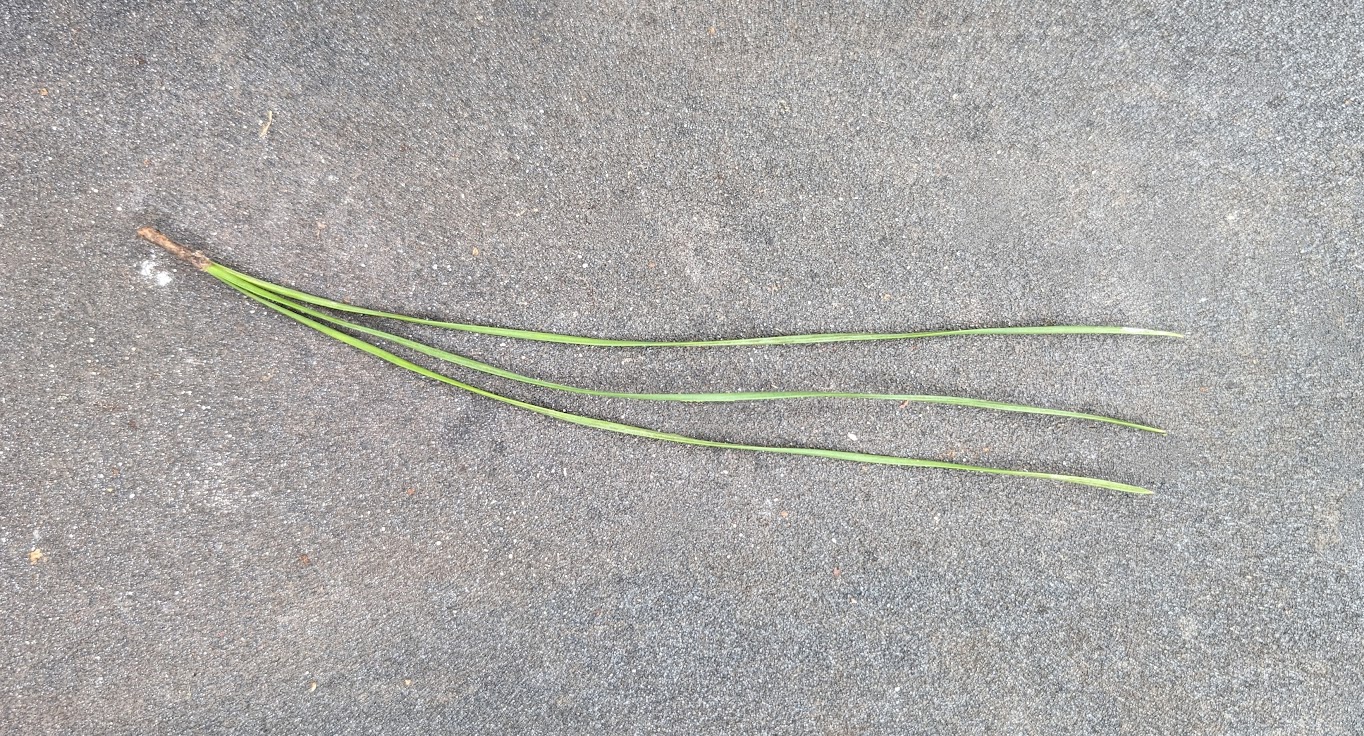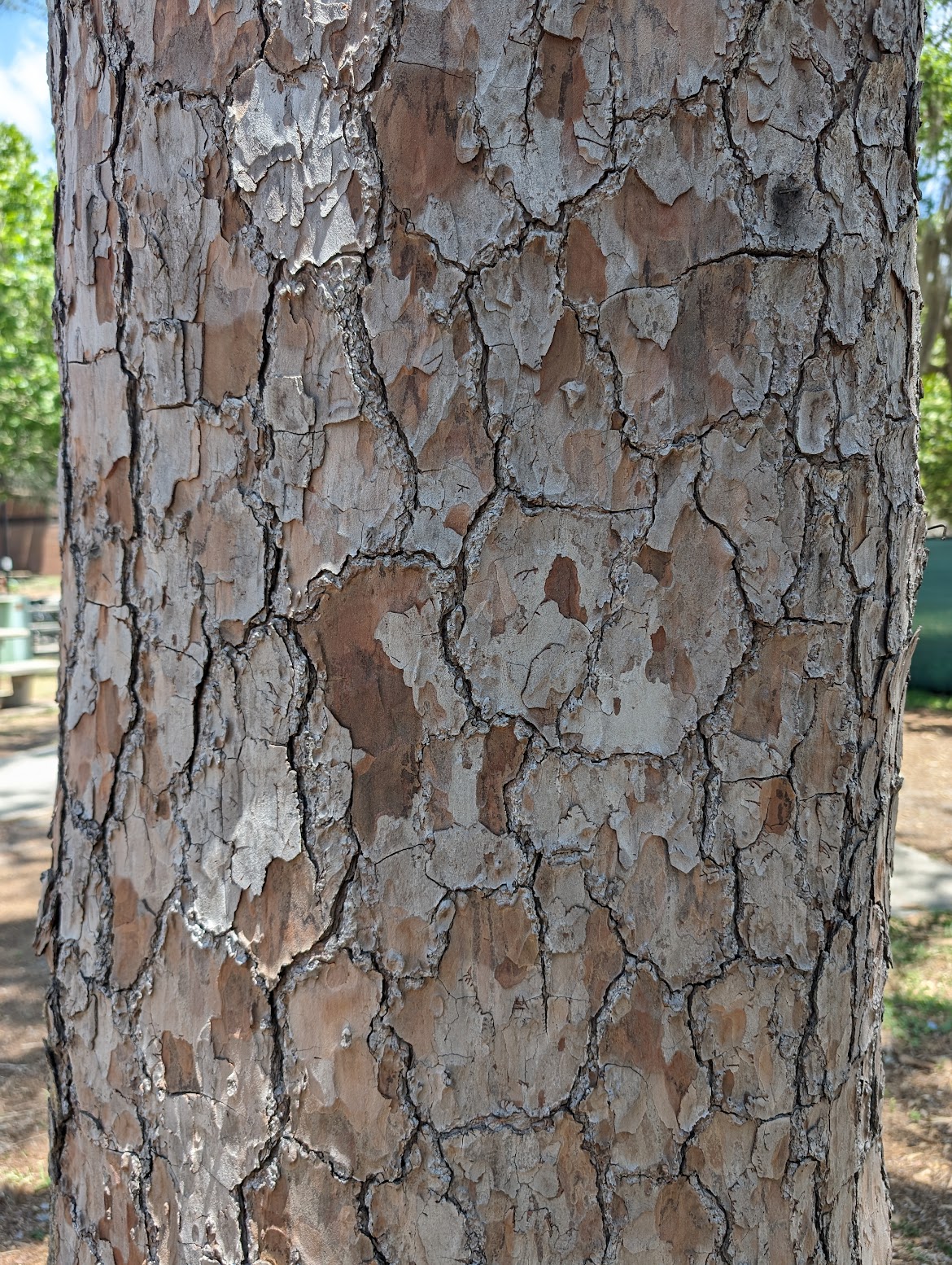Pinaceae – Pine Family
In 2024, this loblolly pine measured 60.2 feet tall and had a diameter of 24.3 inches. Based on USDA Forest Service models, it will absorb approximately 2,690 lbs. of carbon over the next 20 years. Put simply, this tree will offset up to 10,885 car miles worth of carbon dioxide.
See all species on our Campus Tree Tour.
Introduction
The loblolly pine is the fastest-growing yellow pine native to the Southeastern United States. It is a valuable species ecologically and commercially. Its tall stature, dark green needles, and thick, reddish-brown bark closely resembles other pine species; however, it sets itself apart by producing cones covered in sharp spines.
Physical Description
Life expectancy: Up to 200 years
Height: 90 – 110 feet
Crown: 30 – 35 feet
Diameter: 24 – 30 inches
Bark: Greyish brown scales that thicken, develop deep furrows, and turn reddish brown with maturity
Leaves: Evergreen, slightly twisted needles (6 to 9 inches) that grow in bundles, or fascicles, of 3.
Twigs: Thin twigs that look thinner than a pinky finger from a distance.
Flowers: No flowers.
Cones: Male strobili (1 – 1.5 in.) form in late July, and female cones mature (3 – 6 in.) about 2 years later. Reddish-brown cones have scales with sharp spines, and they grow in pairs that persist on the branch after maturing.
Key Identification Characteristics: needles in fascicles of 3, thin twigs, persistent spiny cones, thick reddish-brown bark.
Past and Present Uses
The loblolly pine is the leading timber species in the Southeastern United States; loblolly pine is grown for sawtimber, pulpwood, and poles. The pine has been cultivated to build resistance to disease and ice damage which improves its timber quality.
In addition to timber, the loblolly pine is planted in parks and other urban landscapes. It is resistant to drought, provides shade from the sun, and creates a barrier to wind and noise. Within urban environments, loblolly pines grow best in the full sun and on well-drained soils. The tree is also used to stabilize soils with severe erosion.
Ecological Importance
Origin: Native to the United States
Native Range: Found from New Jersey extending south to Florida and west to Texas (Figure 1).

Figure 1. Native range of Loblolly Pine. Photo credit: U.S. Geological Survey
The loblolly pine grows on a wide variety of sites and soil types within humid climates. The sites range from well-drained areas with clay soil to bottomland sites with organic soil. When fire is suppressed in drier, upland areas, loblolly pines will encroach and increase in abundance. Within its native range, the loblolly pine will grow in pure stands and in mixtures of other pines, such as longleaf and slash pine.
Loblolly pines provide a suitable habitat and food resource for various wildlife species. Its seeds are eaten by small mammals and more than 20 different species of songbirds, such as the pine warbler and the brown-headed nuthatch. Mammals, such as deer and rabbits, consume seedlings, while other game species seek cover within the pine’s dense stands. Large trees are ideal roosting and nesting sites for ospreys and bald eagles, and old-growth stands provide nesting cavities for red-cockaded woodpeckers.
More Information
https://edis.ifas.ufl.edu/publication/ST478
References
Baker, J. B., & Langdon, O. G. (n.d.). Loblolly Pine. Pinus Taeda L. https://www.srs.fs.usda.gov/pubs/misc/ag_654/volume_1/pinus/taeda.htm
Carey, J. H. (1992). Pinus taeda. In: Fire Effects Information System. Pinus taeda. https://www.fs.usda.gov/database/feis/plants/tree/pintae/all.html
Gilman, E. F., Watson, D. G., Klein, R. W., Koeser, A. K., Hilbert, D. R., & McLean, D. C. (2019). ENH-637/ST478: Pinus taeda: Loblolly pine. Ask IFAS - Powered by EDIS. https://edis.ifas.ufl.edu/publication/ST478
i-Tree. (2006). Tree tools - calculate the benefits of trees!. i-Tree. https://www.itreetools.org/



